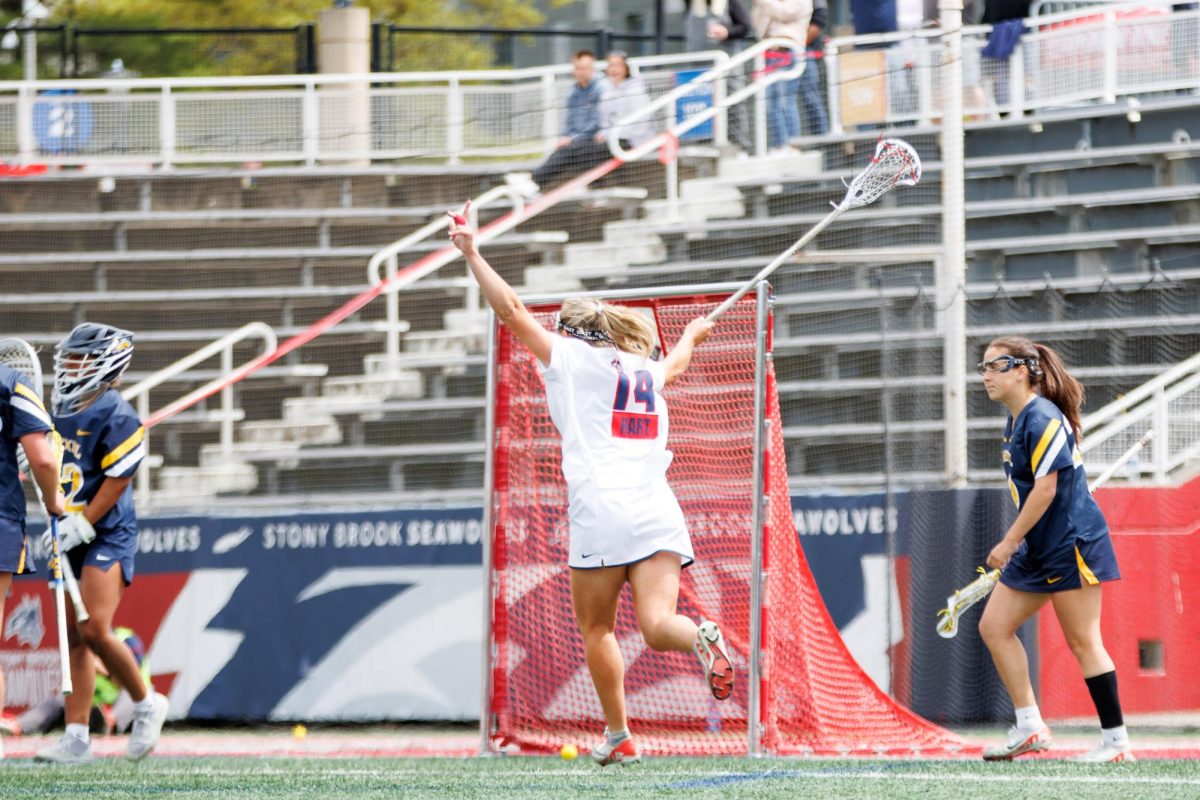
by Paul Grindle and Alexandra Miller
Stony Brook is grappling with an increase in reported sexual assaults. To quote the Feb. 11, 2014 Statesman article, by Ashleigh Sherow, “…there were 17 forcible sexual offenses in 2012 – five more than in 2011 and 10 more than in 2010.” Despite the large student body on campus, this number is unacceptable. With a population of roughly 16,000, that means .2 percent of students have reported a sexual assault, compared to New York State’s 304 reports for its 19.57 million people, resulting in .0016 percent of the population reporting sexual assaults. While college campuses generally have more sexual assaults than other places, New York State’s total of 304 assaults is part of an overall downward trend in reported sexual assaults in the state, while Stony Brook’s total of 17 represents an upward trend. With these facts in mind, the question becomes how to combat the surge of Stony Brook’s increasing number of sexual assaults. Some solutions would be to hire more female police officers, re-orient a portion of the police force to focus on helping victims (as opposed to maintaining law and order), increasing self-defense training and create bystander awareness workshops.
It is interesting to note that if you look at the sexual assault statistics in conjunction with the liquor law referrals, you will notice they both increase dramatically, especially from 2010-2012. In 2010 and 2011, there were 205 liquor law referrals on campus, and in 2012 there were 294. Numerous studies conducted over the past decade have found a significant correlation between alcohol and a variety of injuries, both unintentional and intentional. Unintentional injurious events include: road traffic injuries, drowning, falls, poisoning, fires and others. Intentional injuries primarily concern interpersonal violence, such as intimate partner violence, sexual violence, elder abuse, child abuse, community violence and self-harm. According to a 2011 study published in the journal Drug and Alcohol Review, “Results found that men who are already prone to anger, who have hostile attitudes toward women, and who are in social environments that accept sexual aggression are most likely to engage in sexual aggression when intoxicated.” After reviewing crime reports for the past three years, as well as the results of recent studies on intoxication and sexual aggression, Stony Brook should do more to increase awareness regarding the relationship between alcohol and aggression/violence. Furthermore, our police department should respond to this serious issue with specifically trained task force initiatives, such as hiring more female officers.
The University Police Department does offer a free, women-only course entitled Rape Aggression Defense (RAD). The unfortunate reality is, while it is never the responsibility of the woman to prevent being raped, the last line of defense during an attack would be a woman’s ability to defend herself. That being said, every individual, man or woman, should know how to defend themselves against potential threats. To specifically gear a course towards women’s self-defense against rape is to suggest only one type of assault scenario. Women are not the only victims of rape, nor are most rapes committed by strangers. According to RAINN, Rape Abuse and Incest National Network, approximately 73 percent of rapes are committed by someone known to the victim. Also, it took until 2012 for the US government to include males in their definition of rape. It is even harder for male victims to come forward due to the fact they are expected to know how to defend themselves. So if they get raped, it is even more likely for them to think it is their fault. With these facts in mind, there should be more preparation for how to deal with the types of attacks that are most likely to occur in the real world, during both on and off campus activities. It is obvious to provide tips on how not to walk down a dark, secluded pathway; it is not so obvious to educate people on what to do in situations where the lines are a bit more blurry.
Perhaps the university could create an educational campaign that focuses on motivating students to take an active role in situations they don’t feel are right, instead of watching them play out from the sidelines. We should reinforce and encourage that students (and all humans) need to be good Samaritans, rather than innocent bystanders. Additionally, there seems to be some confusion regarding the definition of consent (you would be surprised to learn what most students consider to be a form of consent). Student Patrick Kim was quoted in Sherow’s article, describing a nonviolent incident at a party where there “was no consent per se” and even went uninterrupted and unreported because “people don’t take it seriously a lot of the time.” There are many myths about what is considered consent, especially when drugs or alcohol are involved. Thus the university should take action to clarify any misunderstandings as a means of prevention.
The university does offer free, forensic examinations for victims of sexual assault at the hospital, called SANE, or Sexual Assault Nurse Examiner. Despite the convenience of having such a service right on campus, medical evidence for a sexual assault case can only be collected for up to 96 hours after the incident, and the evidence collected by SANE will only be kept for a duration of 30 days. Due to the highly sensitive and unstable nature of a sexual assault case, unfortunately not all victims know or are able to seek medical attention immediately. It would be beneficial to our student body to better promote this service. Knowing more about it would encourage more victims to come forward, especially during those critical hours after an assault.
It must be noted that sexual assault statistics only reflect attacks that have been reported, representing only less than five percent of attempted/completed rapes being brought to the attention of campus authorities. Perhaps the addition of more female officers, as well as the expansion of self-defense courses to advise all genders and cover all situations and a bystander awareness initiative, would lead to an increase in the number of reported sexual assaults. If the self-defense courses included tips for what to do in certain social situations, such as parties, bars, or even walking home from a late evening class, perhaps more students would play an active role in looking out for one another in real-life scenarios. These tips could potentially include education on social pressures to drink (such as Greek life or athletic hazing), unknown potency of jungle juice (and various other “bathtub” concoctions), how to detect presence/symptoms of “date rape” drugs (there are easy-to-use drink testing strips on the market) and strategies to make sure friends are never left alone at parties. In addition, being that this is a research institution, perhaps a survey could be conducted (as it has in various other communities/institutions) regarding what students deem is consent to sexual activity. For example, some individuals have the notion that they cannot deny sex to their intimate partner, because it is something that is owed. There is also the belief that once consent is given it cannot be revoked (it can), or that if both participants are under the influence of a substance, consent is waived (it is not). These incorrect beliefs serve to further perpetuate a culture where the foundations that lead to tolerance of rape remain intact. Stony Brook University has admirably tried to combat these foundations, but it can and should do more to fight for a future free of sexual assault.

















